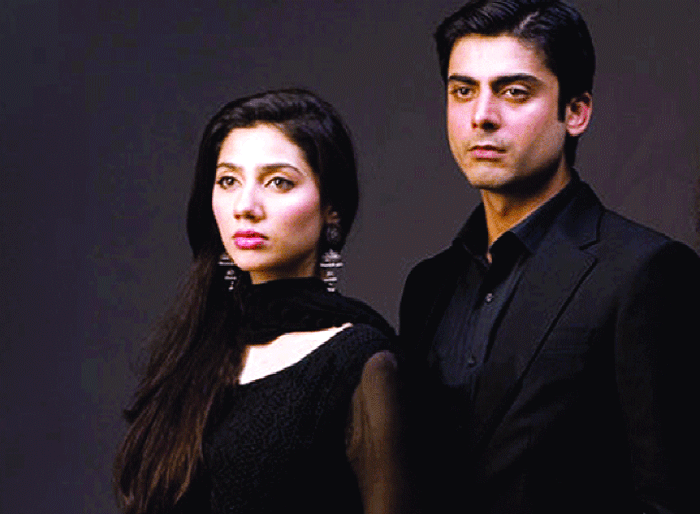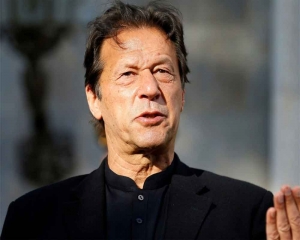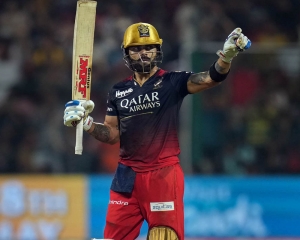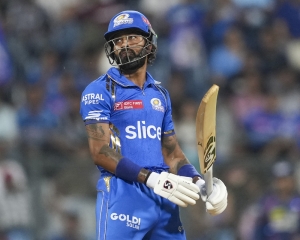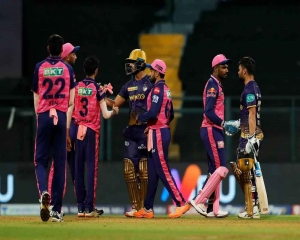In a country where women have been the subject of legislation to prove the state’s Islamic credentials, where tradition jostles with modernity, and the discourse of power prevails over social injustice, romantic melodrama has time and again proven to be a bestseller. It captures the imagination of the nation with its dreams of heroism, aspirational struggles, the fight between good and evil, the dashing hero and the damsel in distress
2011 was an eventful year in the history of Pakistan; it marked two major watershed moments in the country’s history — the killing of Punjab Governor Salman Taseer and Minorities Minister Shahbaz Bhatti for their opposition to Pakistan’s Blasphemy laws, and the capture and killing of the founder of Al Qaeda, Osama bin laden, by American special forces in Abbottabad.
In 2010, the country was devastated by floods which affected more than 20 million people. Against the backdrop of Pakistan’s deteriorating social conditions, television based religious celebrities and Islamic talk shows middle class housewives continued to review their social situations through the ever-popular Urdu drama serial.
Urdu television drama has captured the mood of the nation over the years, projecting a symbolic imagined nation that comes together to watch its heroes and heroines battle it out in the risky arena of romance, forced marriages and unrequited love played out to the haunting melodies of the Urdu ghazal. It has also offered strong roles for women, altering the male-centred reality of social lives.
The successful digest and novel writer Farhat Ishtiaq, known as the Queen of Romance, who penned the novel Humsafar, took on the role of screenwriter for the drama adaptation in consultation with producer Momina Duraid and the assistance of the seasoned director Sarmad Sultan Khoosat. While the novel uses flashback to narrate the story, the television serial follows a chronological pattern allowing for the melodrama to gain momentum with each episode.
The story of Humsafar is a fairly typical one of a love triangle, poor girl meets rich boy, gets outfoxed by the family and returns back to power through a paternity claim. There is a typical saas who can’t let go of her beloved son, a hierarchy of family relations between maternal and paternal lineages and a son who is low on emotional intelligence and high on economic.
Khirad is the Sita-like figure, an embodiment of ‘wifely devotion and self-sacrifice’, who enters the narrative with a naivety, innocence and a chaste love for Asher. The narrative builds on Khirad and Ashar’s daughter Hareem, drawing empathy from the viewers as it is her fate that brings the estranged couple back into contact with each other and the demand by Khirad for Hareem’s father to restore what is their daughter’s haq (right) which has been denied to her.
At the heart of the novel is the strong character of Khirad who manages to keep her self-esteem despite her mother-in-law and her cousin-in-law’s evil machinations to estrange her from her husband in which they succeed and she only returns to Asher to beg for money for her daughter’s treatment as she was born with a congenital heart condition and requires urgent surgery. The struggle in her mind is: ‘Hareem, ya izzat nafs, beti ya ana, jigar ka tukra ya khudari’ (Hareem or self-respect, my daughter or my dignity, my darling or my pride).
Yet throughout the serial, neither Khirad nor Asher are convincing as strong characters. She cries endlessly, he flops around between cousin and wife, at stake are liberal values a Yale education and entitlement vs local Urdu-speaking conservatism, hardship and intelligence. There is an interesting tension at the start of the serial with the suggestion of a forced marriage between Asher and Khirad engineered by his father against the will of his mother. What is frustrating though is that by the end of the drama, it is the mother who is the villain and the father a sage who chose the right type of girl for his son. Rather typically, familial patriarchal subservience wins, hitting all the right notes as far as ratings are concerned. The novel ends with Asher gathering Khirad into his arms having declared his undying devotion to her and their daughter.
What nobody expected at the time the drama serial was aired was the audience response; it set new viewership records pulling in audiences far and wide. Humsafar released beyond Pakistan; in neighbouring India where it was aired on the Zindagi channel, it was dubbed into Arabic for a Middle Eastern audience and most recently the show has been released on Netflix. It has met with critical acclaim in all its outings so far. What has become synonymous with the lead roles is the idea of the perfect bahu (daughter-in-law) that is Khirad played by Mahira Khan and the equally perfect damaad (son-in-law) Asher played by Fawad Khan.
It brought celebrity status to its lead actors who have gone on to acquire international fame, albeit at a heavy price as cross-border relations continue to deteriorate and militant national moods impact the fortunes of the entertainment industry. The romance is visualised and written in a style that is global; there is an emphasis on the intensity of the hero’s gaze, a tenderness and capacity to nurture and a quality of vulnerability that is attractive to the woman he loves. She is able to rescue him from his mother who has become his nemesis.
Visually, what is attractive about the serial is the simplicity with which it has been shot, the chemistry between the lead roles, and the painstaking representation of Khirad’s bechargi (helplessness) despite the elegant clothes. Her visual representation is vividly contrasted with Sara who is westernised, addicted to her cousin, yoga, parties and her job, while Khirad is simplicity personified with her face bare of make-up, modest salwar kameez, a distaste for going out and a safe professional life as a teacher when the need arises.
While Sara simmers doing yoga and eventually self-destructs, Khirad is the yogi whose inner peace gives her the moral victory over Sara every time. Khirad’s morality is mocked by Asher, her habit of telling the truth ingrained in her by her father is a memory that she shares with him, making herself vulnerable in a mutual relationship of trust in marriage. To make the romance work, the trust in their relationship is broken by Asher; he lacks her moral certitude and self-confidence, revealing a masculinity in crisis.
This is brought sharply into focus with the symbolic rape scene which further accentuates his disempowerment. He is the one who is hospitalised, suffers an emotional breakdown, and blanks out his wife completely from his life. He only rescues her at the bitter end when he sees physical evidence in the form of a letter that she had written to him professing her innocence. Sara’s suicide in the face of unrequited love is a scene-stealer, a fellow academic, who is an ethnographer, reports that women have great empathy for Sara’s situation and see themselves reflected in her.
In the Cold War period, Urdu drama was equally popular; the middle-class heroines of the 1980s conceptualised by scriptwriter Haseena Moin symbolised independent career-minded women, such as Sana in Ankahi, Zara and Sanya in Tanhaiyaan, and Zoya inDhoop Kinare, who remained emotionally attached to the bonds of family. Moin and her contemporary women writers brought a new Pakistani woman to the screen — she was modern, toiling, persevering, and maintained a traditional moral order amongst the social chaos of ensuing modernity.
These scriptwriters were continuing the narratives of the Progressive Urdu women writers Rashid Jahan and Ismat Chughtai in the post-Partition nation drawing on the popular genre of romance. In the 21st century, the formulaic family narrative has become a staple soap opera style romance offering us traditional roles for women reproducing stereotypes and framing gendered norms in Pakistani society.
Contemporary dramas, thus, articulate a heteronormative visual culture of modern women’s subjectivities in elite and middle-class families. In these dramas, the production quality is sleek but the content has moved away from the assertive, liberal heroines of the 1980s to pious and cautiously modern women who are good sisters, wives, and daughters. The dramas are adapted from popular romances written for Urdu women’s magazines or digests that have grown in popularity as women’s participation increases in the urban workforce. These popular narratives seem distrusting of the secular radicalism of Progressive writing and offer their own distinctive brand of family sagas emphasising the significance of male-female relationships to reiterate a heteronormative society while critiquing the conspicuous consumption of the elite classes as a sign of moral degradation.
Given the current boom of Urdu drama written by women and the cultural export of serials such as Zindagi Gulzar Hai to Arab countries, Europe, and India, it is instructive to look at the story of domesticity that is being told through the representation of the neoliberal family in a global marketplace. In these dramas, national trajectories of women’s public and private lives reach out to a wider Muslim audience, offering a familiar affiliation through the conflicted pious authentic lived experiences of the heroines and the allure of the West that endangers them. The flow of capital is depicted uncritically and seen as a necessity in the uplift of social deprivation.
In many ways, the crop of new dramas can be seen as allegories of the post-colonial nation that reiterate the need for strong families to fight against the persistent threat of broken homes, and they project women at the centre of the crisis of families. Most noticeably, the women from the lower middle-class homes, the heroines of these shows, are groomed by their mothers whose husbands have either passed away or entered into a second marriage. There is a strong focus on cousin marriages in some dramas, highlighting the challenges of modernity and the rising urbanisation of Pakistani society.
To my mind, the most notable feature of contemporary Urdu drama is the conflict between tradition and modernity and the moral divide between the elites and the new urban middle classes as they respond to and get absorbed in the process of growing urbanisation. Middle-class morality is underpinned by a somewhat conservative attitude to gender roles in terms of how women come across visibly and the attention they pay to the tarbiat (training) of their children.
The new Pakistani woman who emerges from these television serials is one who is pious, hardworking and capable of negotiating the transitional society she lives in. Through the microcosm of her home and domestic life, she reflects the traditional values of family and community intrinsic for good citizenship. Her subjectivity is increasingly conflicted by her collusion with neoliberal elites through a good marriage.
In a country where women have been the subject of legislation to prove the state’s Islamic credentials, in a place where tradition jostles with modernity, and the discourse of power prevails over social injustice, romantic melodrama has time and again proven to be a bestseller capturing the imagination of the nation with its dreams of heroism, aspirational struggles, the fight between good and evil, the dashing hero and the damsel in distress. lately, the prevalence of piety as a means of holding on to godliness in an increasingly materialistic world has become a feature of the visualisation of the romantic.
Khirad appeals to a wide spectrum of audiences with her long glossy hair, traditional clothes and pious demeanour, while Asher is the dashing trustworthy dutiful son. Confused by modern life, he needs Khirad with her traditional values to teach him the lesson of conjugal love with her forbearance, while Hareem’s precarious health is the glue that pushes the narrative forward and brings the dysfunctional family back together. Their love story is punctuated by the lyrics of the Urdu ghazal and its story of unrequited love.
It can be argued that the strongest suit of Humsafar is the theme song borrowed from Naseer Turabi’s Urdu ghazal sung by Qurat-ul-Ain Balouch. It is a befitting accompaniment to Pakistan’s love affair with Humsafar. Written in memory of the events of 1971, it articulates a bittersweet unrequited love and remembers the pain of separation:
Voh humsafar tha magar us se hamnawai na thi (He was our fellow traveller but there was no love between us)
Ke dhup chaon ka alam raha, judai na thi (We were not separate but remained in a state of sunshine and clouds)
Whether viewers actually make the historical connection between the ghazal and the time it was written in can only be speculated on. The relationship between music and memory is a powerful one as is historical amnesia in the hands of national ideology. The serial producers have gone for a light touch and emphasised romance over social commentary. In the end, the serial advocates empathy and forgiveness as a way forward. Asher forgives his mother who has gone from monstrous to mad and love is restored.
Visualised through the microcosm of familial lives,Humsafar marks the journey of a nation riven by social hierarchies, and the open heart surgery of the daughter Hareem represents the allegory of a broken nation nursed back to health through love. Asher’s monstrous mother, who metaphorically killed her son with her obsessional love, loses her mind and he is reunited with his family. Given the melodramatic emphasis on the cruelty of the mother towards her daughter-in-law and her mental breakdown, the social message is loud and clear: We need to be able to forgive in order to co-exist and to trust each other again.
The writer is Senior lecturer in Urdu and Postcolonial Studies at SOAS, University of london. She is the co-author (with Peter Morey) of Framing Muslims: Stereotyping and Representation After 9/11













